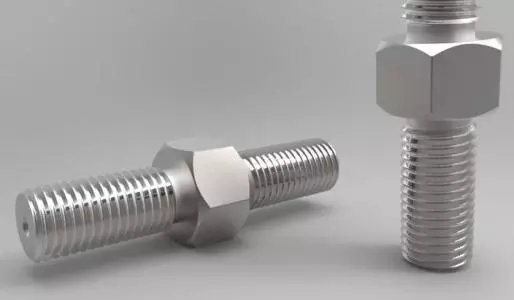
Thread, every day
A long time
The domestic foreign, the metric system of British system.
A straight cone, sealed, unsealed,
Inside, 55° 60°.
In a word, it is often messed up.
Check it once from one to the other
Detailed diagrams teach you to distinguish
The distinction between different thread styles and standards
In accordance with the use, there are three major categories:
First, the thread is connected to the fastening, that is, the bolt and nut;
Second, transmission thread, that is the kind of lathe cutter;
Third, pipe thread, pipe connection.
According to the standard, there are the following:
International Metric Thread System.
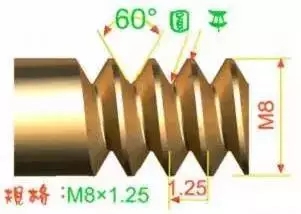
The national standard CNS of our country uses the thread. The top of the tooth is flat, easy to turn, and the bottom of the tooth is circular arc to increase the strength of the thread. The thread angle is 60 degrees, and the specification is expressed in M. The metric thread can be divided into two kinds of coarse teeth and fine teeth. It is represented as M8x1.25. (M: code, 8: nominal diameter, 1.25: pitch).
American Standard Thread:

The top and root of the thread are all flat, and the strength is better. The thread angle is also 60 degrees, and the specifications are represented by several teeth per inch. The thread can be divided into coarse teeth (NC), fine teeth (NF), and fine tooth (NEF) grade three. The representation method, such as 1/2-10NC. (1/2: outer diameter; 10: number of teeth per inch; NC code).
Unified standard thread (Unified Thread):
By the United States, the United Kingdom, Canada and the three countries jointly formulated, for the present common British system of thread. The thread angle is also 60 degrees, and the specifications are represented by several teeth per inch. The thread can be divided into coarse teeth (UNC), fine teeth (UNF) and fine teeth (UNEF). The representation method, such as 1/2-10UNC. (1/2: outer diameter; 10: number of teeth per inch; UNC code).
V type thread (Sharp V Thread):

The top and root are all apex, weak in strength and bad for bad use. The angle of the thread is 60 degrees.
Whitworth Thread (whorl):
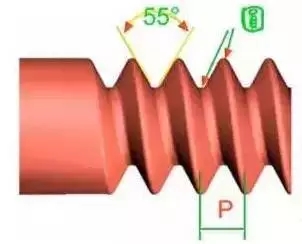
The British national standard uses the thread. The thread angle is 55 degrees, indicating that the symbol is “ W”. It is suitable for rolling process. The representation method, such as W1/2-10. (1/2: outer diameter; 10: number of teeth per inch; W code).
Round thread (Knuckle Thread):
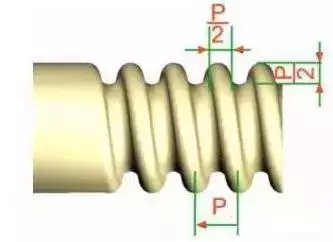
Standard thread for German DIN. It is suitable for the connection of light bulb and rubber tube. The symbol is “ Rd”.
Pipe thread (Pipe Thread):

The threads used to prevent leakage are often used for pipe fittings of gas or liquid. The thread angle is 55 degrees, which can be divided into straight pipe thread code &rdquo, P.S., N.P.S.&rdquo, and diagonal pipe code &ldquo, N.P.T.” its taper is 1:16, that is, every foot 3/4 inch.
There are also people in the industry say: NPT is the US standard 60 spinal canal thread, the North American Standard, PT is the 55 degree conical tube thread, it belongs to the Wyeth thread, it is used in Europe and the Commonwealth of England.
Fang Luowen (Square Thread):
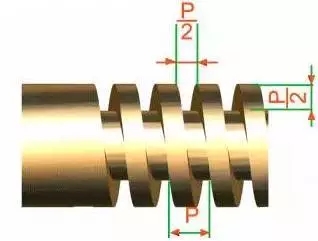
The transmission efficiency is big, second only to the ball screw, but can not be adjusted with the screw cap after wear, which is its disadvantage. It is usually used for the screw of the vise and the screw of the crane.
Trapezoidal thread (Trapezoidal Thread):

Also called the Kum thread. The transmission efficiency is slightly smaller than the square thread, but it can be adjusted by the screw cap after wear. The thread angle of the metric system is 30 degrees and the British system thread angle is 29 degrees. It is usually used as a guide screw for a lathe. The symbol is “ Tr”.
Sawtooth thread (Buttress Thread):

Also known as the trapezoid thread, it is only suitable for single direction transmission. Such as screw jack, pressure machine and so on. The symbol is ” Bu”.
British thread:

The size of an English thread is usually expressed as a number of threads per inch of the thread, referred to as "the number of teeth per inch", just as the countdown of the pitch. For example, the thread of 8 teeth per inch, its pitch is 1/8 inch.
In this paper, we welcome more people in the industry to criticize and correct them, so that more people will have a comprehensive and detailed understanding of the knowledge point of the thread.
Welcome message!
Ran
This article comes from a large number of sources
Editing and editing by process equipment network










